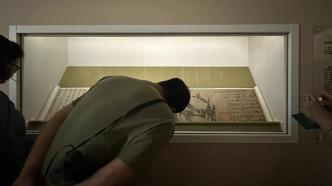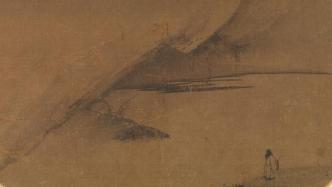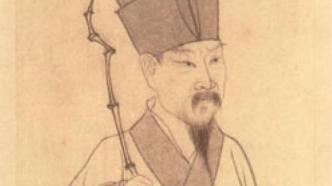
The 19th day of the twelfth lunar month (January 29, 2024) is the 987th birthday of Su Dongpo, a great literati, calligrapher and painter. In order to commemorate this giant in the history of Chinese culture, in addition to the birthday party held by Su Dongpo at the Sansu Temple in Meishan, Su Dongpo’s hometown, Su Dongpo An elegant birthday party was also held on the bank of the beloved West Lake in Hangzhou.
The West Lake Museum in Hangzhou, which held "Ugly Stones with Texts: Special Exhibition of Ancient Stone Appreciation Art" to commemorate the legacy of Dongpo's stone appreciation, announced yesterday that the exhibition has been postponed to February 28, spanning the Lunar New Year. On the occasion of the 987th anniversary of the birth of Su Dongpo on the 19th day of the twelfth lunar month, the West Lake Museum and some exhibitors jointly held the "Su Dongpo Party" gathering event. On the one hand, it followed the old customs of Hangzhou to commemorate the "old mayor". As a supporting activity with the theme of this stone exhibition "Ultimate Stones Revealed to Pay Tribute to Po Weng".
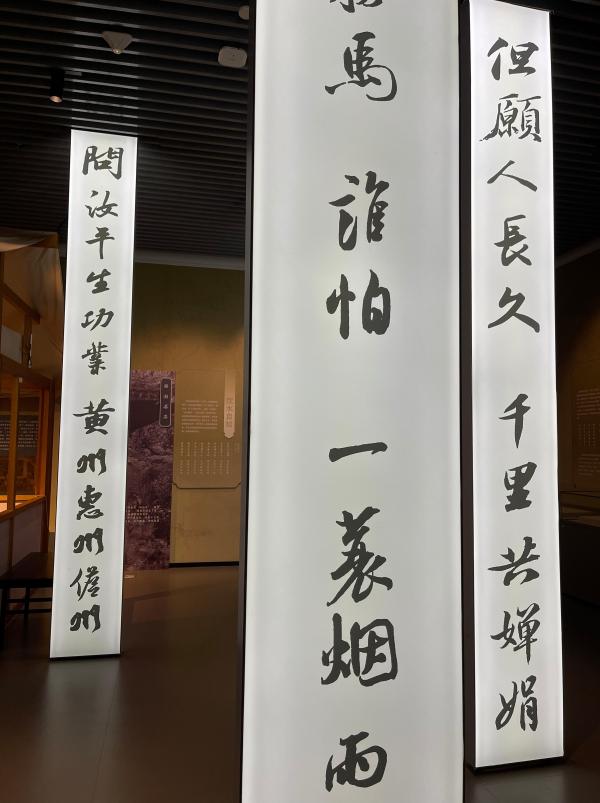
Dongpo's famous sayings are presented live in the exhibition hall of "Ugly Stones and Writings: Special Exhibition of Ancient Stone Appreciation Art" at the West Lake Museum in Hangzhou
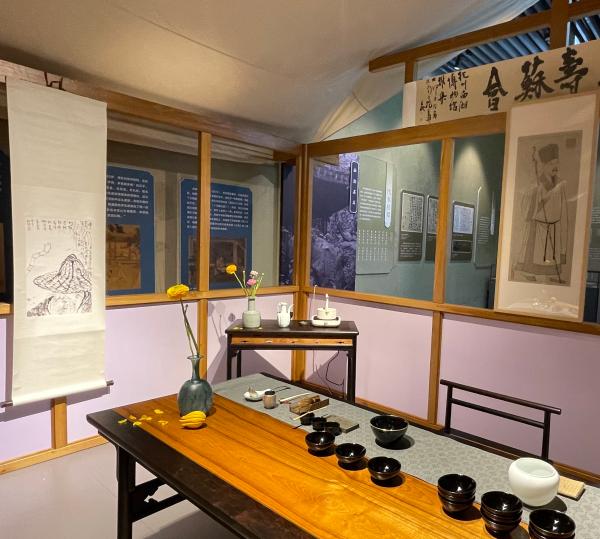
The scene of the Suzhou Suzhou Party in Hangzhou West Lake Museum
"Su Dongpo has a deep connection with Hangzhou. He served in Hangzhou twice and had an indissoluble bond with West Lake. The original Shou Suhui was in Hangzhou, and Hangzhou was also Su Dongpo's second hometown. His two visits to Hangzhou can be seen Said to be his new life, the West Lake nourished his life very deeply, and the West Lake is a place he will never forget." Pan Cangsang, director of the Hangzhou West Lake Museum, said in his speech that the theme of the Hangzhou West Lake Museum is "One Man Through the Ages - Su Dongpo" After the "Cultural Relics Exhibition" came to an end last year, another stone appreciation exhibition related to Su Dongpo - "Ugly Stones with Art: Special Exhibition of Ancient Stone Appreciation Art" was held.
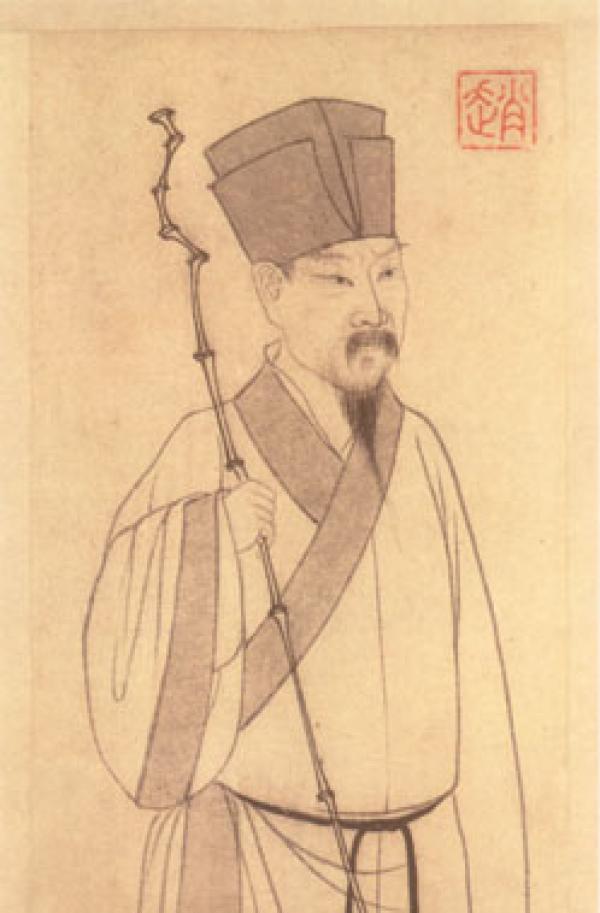
Part of a portrait of Su Shi painted by Zhao Mengfu in the Yuan Dynasty
The birthday party of the West Lake Museum is specially arranged in a literati space in the exhibition hall. Attendees bowed gracefully, and the Shou Su Hui performed separately around burning incense, ordering tea, hanging paintings, and arranging flowers, appreciating the past and communicating, and commemorating the elegance of the Song Dynasty people. Two portraits of Dongpo were displayed on site. One was a copy of the portrait of Su Shi painted by Zhao Mengfu of the Yuan Dynasty, and the other was a portrait of Su Dongpo painted by exhibitor Gu Cunyan many years ago. It depicts Dongpo walking with a hat and a staff, with the inscription: A sentence from "Ding Feng Bo: Don't Listen to the Sound of Beating Leaves in the Forest": "The bamboo stick and mango shoes are lighter than the horse, who is afraid? You can live your whole life in the misty rain."
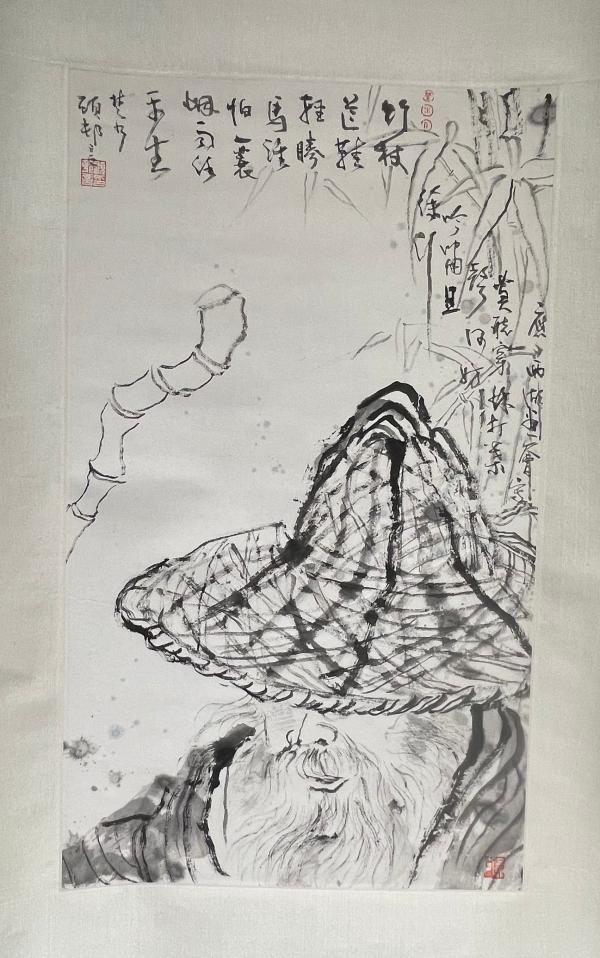
"Dongpo's Staff" Gu Cunyan, 2016, ink on paper
The person who ordered tea on the spot was Han Zheming, who was born in the Chinese Academy of Art. He is a researcher of tea culture in the Song Dynasty and the person in charge of traditional tea ordering. He performed the tea ordering skills of the Song Dynasty on the spot. The handle, a spoonful of tea powder, hot water into the cup, beat and whisk." Especially the "Tea Landscape" performance, the white foam paste on the tea soup surface is used as paper, and the green tea paste is used as ink. It is cleverly conceived and carefully painted. A lifelike "Blue Stone Picture" is ready to come out, full of poetic and picturesque feeling. The whole picture It can be maintained for half an hour until the tea soup cools down and the scene does not disappear. This is also a kind of inheritance and development of the Song Dynasty's tea drama (also known as Fencha, Shui Danqing and Tang Opera). Today, Wuyishan City’s “Tea Show” is still a provincial intangible cultural heritage in Fujian.
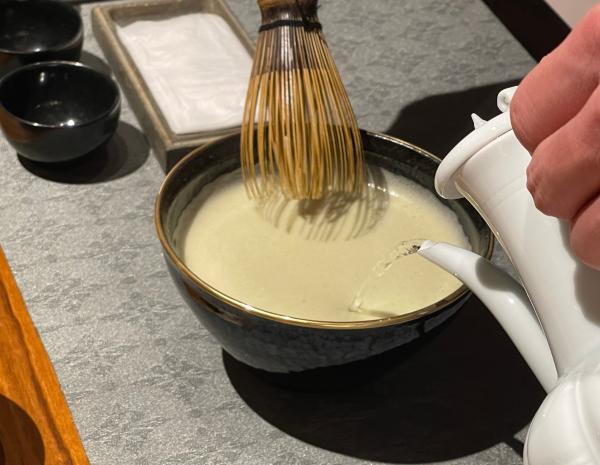
The scene of the Suzhou Suzhou Party in Hangzhou West Lake Museum, interpreting tea ordering in the Song Dynasty
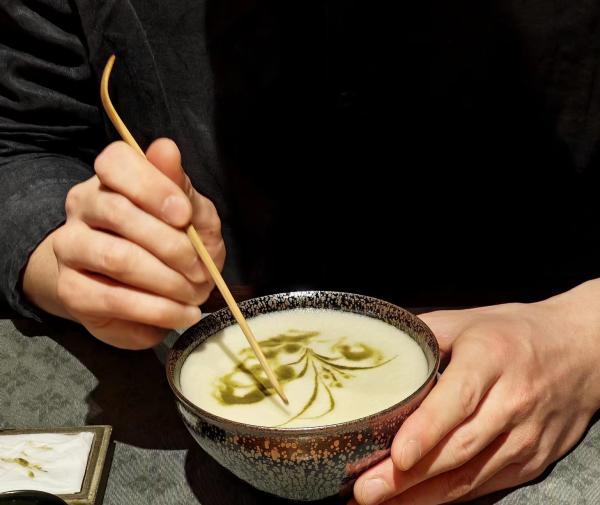
The scene of the Suzhou Suzhou Party in Hangzhou West Lake Museum, interpreting tea ordering in the Song Dynasty
Gao Junjie, the owner of Yushan Hall, who also graduated from the China Academy of Art, has traveled through Eastern and Western aesthetics for 20 years. He once established the Glass Art Department of the China Academy of Art and is dedicated to bringing glass materials from the laboratory into daily life. He is the first in the country Creator of Liuli Gao ancient artifacts. The ancient colored glaze he created was formed by the lost wax method, with thin bodies and the ancient aesthetics of the Tang and Song Dynasties as the main line of creation. The practical utensils such as flower pots and tea sets presented are elegant in color and full of ingenuity.
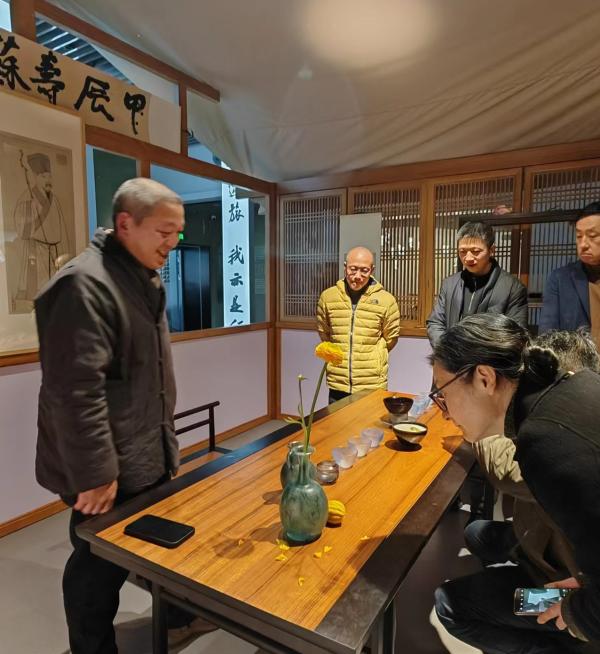
Hangzhou West Lake Museum Shousu Hui ancient colored glaze display site
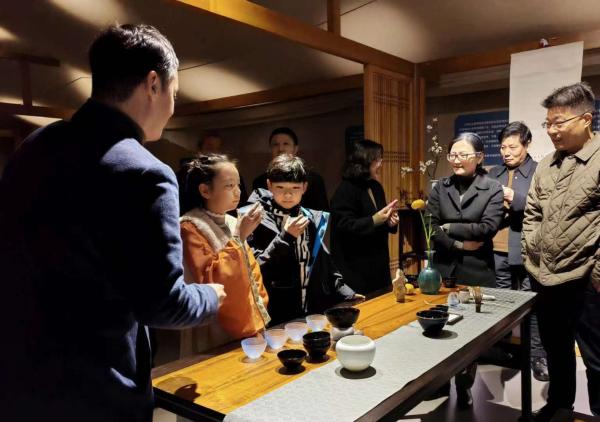
The scene of the Suzhou Suzhou Party in Hangzhou West Lake Museum
Jiang Lei, the owner of the Tibetan Stone Family and Bo Yunxuan, and Chen Gaosheng, the owner of the Songshi Hall, offered the Inner Mongolia Gobi meat stone and the Yongkang pine stone respectively. It is also an ancient tradition to hold the stones to celebrate birthdays. Strange stones have the meaning of longevity and were called "Shou Stone" in ancient times. Nowadays, Korean ornamental stones are also called "Shou Stone". For example, the Lingnan painter Ju Lian in the late Qing Dynasty loved to paint and play with rocks. When Ju Lian had his sixtieth birthday (1887), his disciples presented him with a piece of Taihu stone as a birthday gift and placed it in the Shixiang Garden in Guangzhou. His disciples and friends also composed 26 birthday poems, which were compiled into "Xiao Yue Qin Guan Longevity Words". Tan Bocai painted a small portrait of Ju Lian, holding a fistful of stone (like yellow wax stone) in his hand, which not only symbolizes the owner's love for the stone, but also expresses birthday wishes. Ni Baocen's poem said: "This stone has an infinite life. I don't know when it will be born. If I ask about people of the same age, the only one is the emperor's brother."
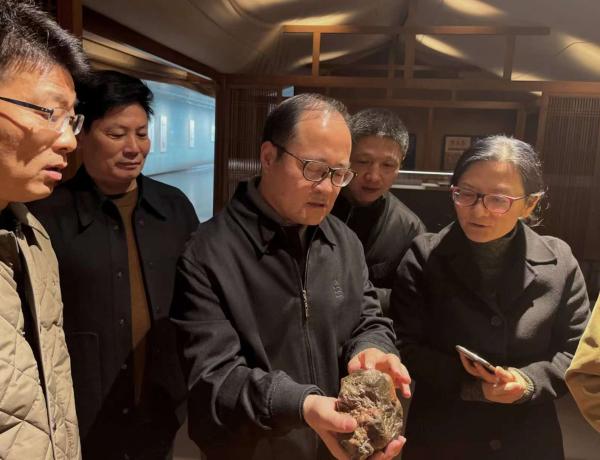
Hangzhou West Lake Museum Shousuhui Stone Appreciation Scene
Participants of the Shousu Society also visited the "Stone Chou and Wen: Special Exhibition of Ancient Stone Appreciation Art". On the occasion of the postponement of this special exhibition, some new exhibits have been put on display, including stones collected by Hangzhou collectors Zilu, Zhang Yibin and Pinyaoguan. For example, the contemporary artist Mr. Zeng Fanzhi bought the "Biao Wang" Lingbi Stone "Bridge with Rainbow and Green" on the cover at a high price from Sotheby's Hong Kong Spring Auction "Gathering - Contemporary Literary Art" in 2014. It was once praised by the Internet as "Top 10 Most Expensive Stones in the World". The stone is in the shape of a bridge, dark brown, with wrinkles all over the body like stacked clouds, and the patina is warm and delicate. Although it is only two or three inches wide, it has a strong aura. It is a famous Lingbi Wanluo stone. It was originally collected by the owner of Shuishongshishan House, a famous British collector.
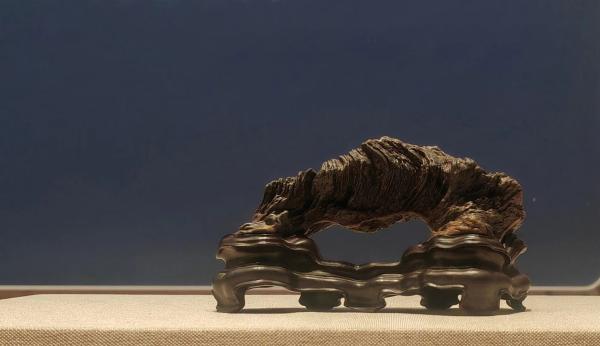
The West Lake Museum's "Ugly Stones and Texts: Special Exhibition of Ancient Stone Appreciation Art", the Lingbi Stone "bridges with rainbows and greenery"
On one side is the Qingzhou Shiyan Mountain (collected by Hong Yuru), which is blue-grey in color and thick in texture. It is made of nature on all sides and has a naturally flat bottom. There are many peaks in the front and several towering peaks in the back. The orifices are transparent and round. The shape of this ornamental stone is very similar to the Hukou stone in Lin Youlin's "Suyuan Stone Book" of the Ming Dynasty, and it also contrasts with the "Fifth Stone in the Clouds" painted by Mr. Zeng Fanzhi.
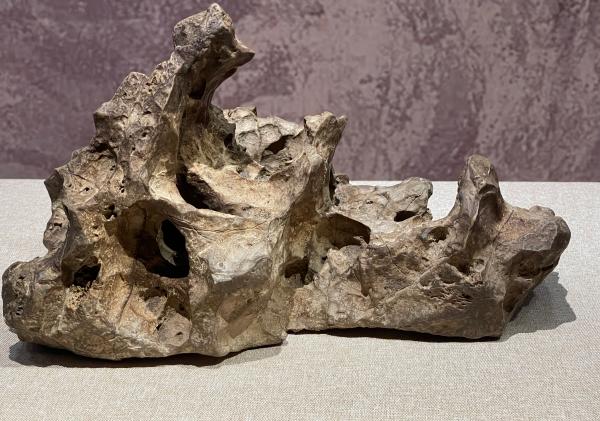
West Lake Museum's "Ugly Stones with Texts: Special Exhibition of Ancient Stone Appreciation Art", Qingzhou Shiyan Mountain
A group of British stone combinations "Mi Fu Worship Stone" (Pu Yun Xuan Collection), small on the left and large on the right, placed on a wooden base with cirrus pattern, like two fairy mountains. The mountain on the left is more like a human figure, in the shape of a bow; the mountain on the right is in the shape of a standing peak, with rugged wrinkles. The two pieces of ornamental stones are combined into one, showing the story of "Mi Fu worshiping the stone", which is lifelike and very rare.

West Lake Museum's "Stones are ugly but literary: Special exhibition of ancient stone appreciation art", the British stone combination "Mifu Worshiping Stones" (Collected by Puyunxuan)
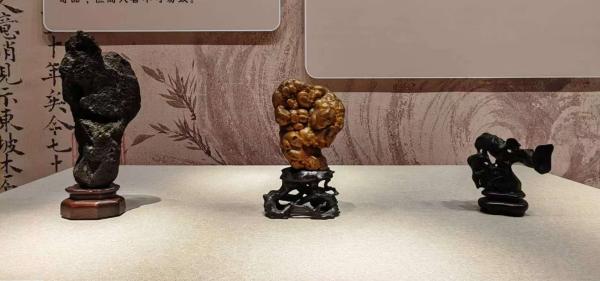
The West Lake Museum's "Ugly Stones and Texts: Special Exhibition of Ancient Stone Appreciation Art"
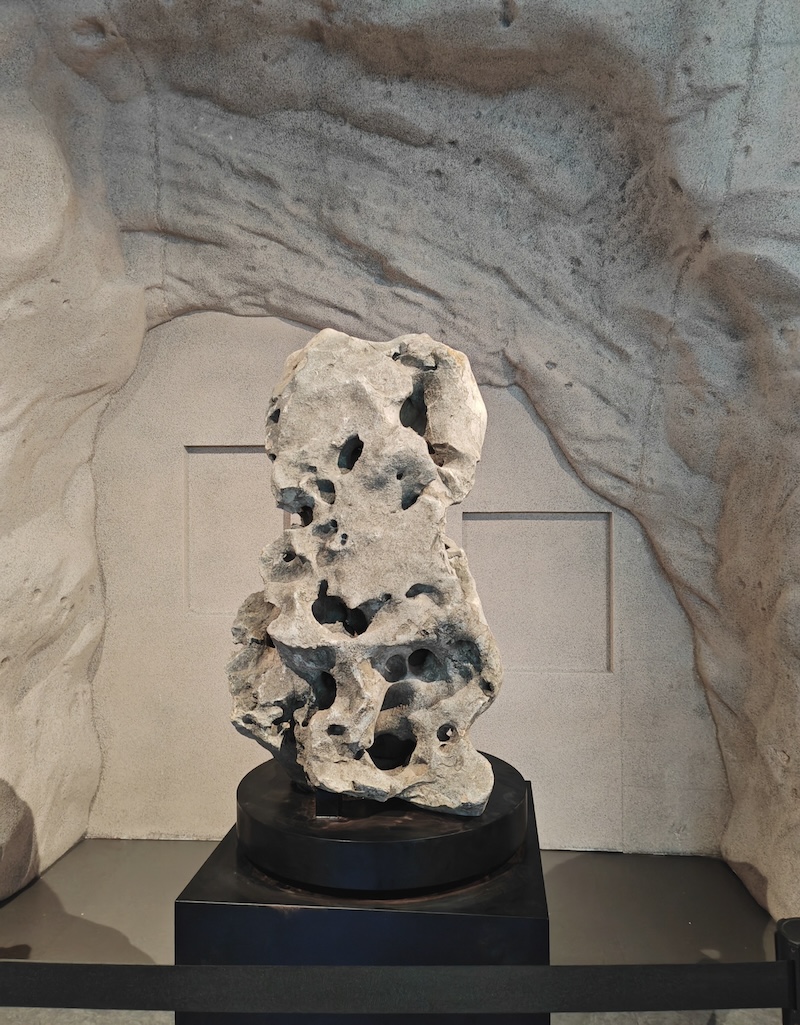
West Lake Museum's "Ugly Stones and Texts: Special Exhibition of Ancient Stone Appreciation Art", Shishanzi, Taihu Lake
The Shou Su Club also arranged an outdoor program - a visit to Tianzhu Mountain Rocks. This is also an example related to Su Dongpo's stone appreciation.
When Su Dongpo resigned as the governor of Hangzhou, his friend Huijing, a monk from Tianzhu Temple, "presented him with an ugly stone". The poet wrote three poems to thank him, the last of which said: "Six hundred days before I was in the county, I didn't remember how many times I came back from the mountains. I also want to go to the first peak of Tianzhu and plant the cloud roots everywhere." The Xiatianzhu Temple here is located in the current Fajing Temple. There is the famous "Sansheng Stone" on the mountain, not far from Lingyin Feilai Peak. The "ugly stone" obtained by the poet is the Tianzhu mountain stone, which belongs to the limestone type and is similar to the Taihu stone. It is bluish in color, rich in wrinkles, and has a certain expressive power. Tianzhu stone has become famous as early as the Tang Dynasty. The poet Yao He said in "The Standing Stone in Front of the Tianzhu Temple" that "the thunderbolt scratches the dragon's old claws deeply, and the flexion marks are shallow, the tiger claws the new claws. The moss is sticky, the moon is picky in the eyes, the wind is picky, and the dust is condensed in the clouds and the rain knocks." knock."
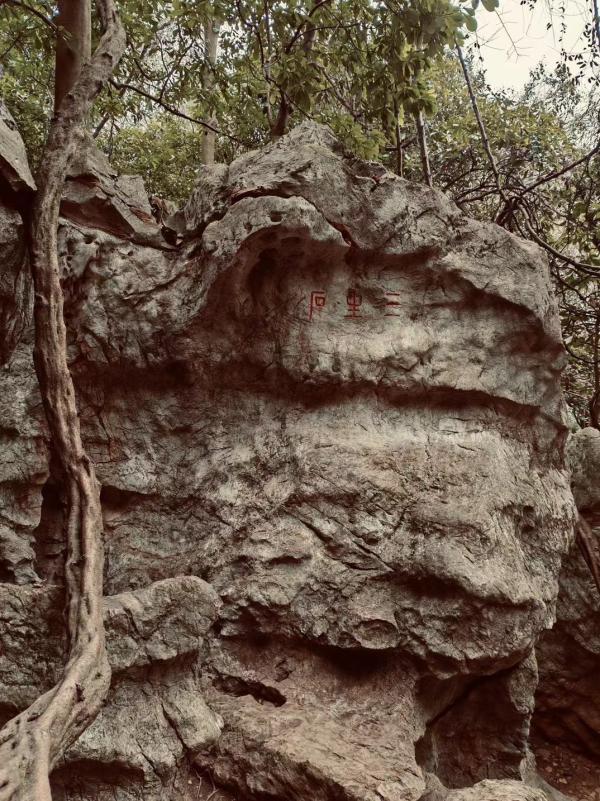
The "Sansheng Stone" of Tianzhu Mountain Stone
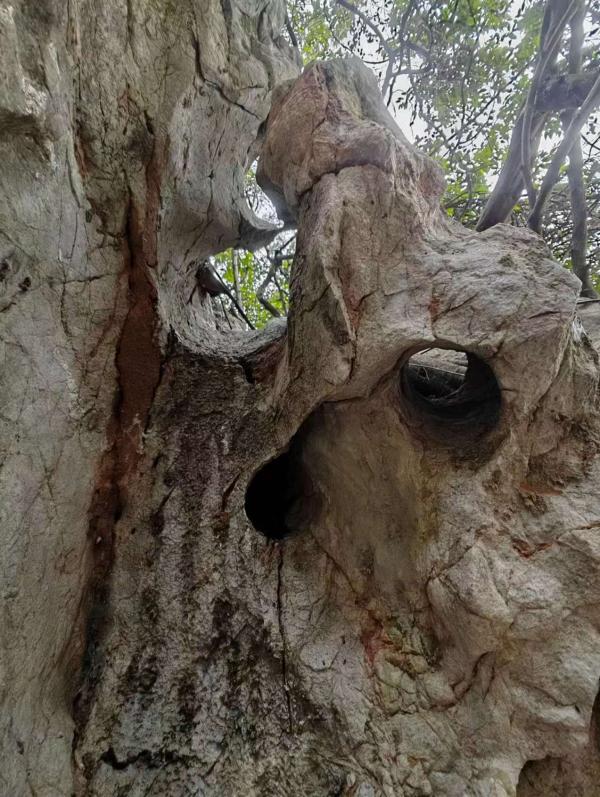
Tianzhu Mountain Stone
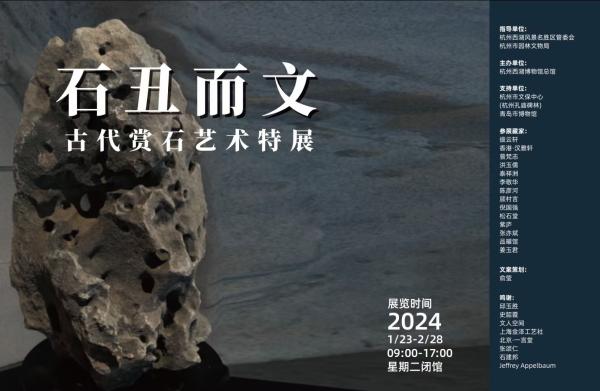
West Lake Museum "Ugly Stones with Text: Special Exhibition of Ancient Stone Appreciation Art" (January 23-February 28)
Regarding Tianzhu stones, Bai Juyi, a poet of the Tang Dynasty whom Su Dongpo admired, also collected them. "Old Book of Tang·Biography of Bai Juyi" (Volume 166) records: "Letian dismissed the governor of Hangzhou and returned home with one Tianzhu stone and two Huating cranes. "However, Bai Juyi wrote about two squares of Tianzhu stones, "I returned from Dian County in three years, and the income was not gold and silk. Two pieces of Tianzhu stones, and one Huating crane." ("Luo Xia Bu Ju") should still be based on what the poet said. In the famous "Taihu Stones", Bai Juyi also ranked Tianzhu stones with Luofu Mountain stones and Taihu stones: "The stones have clans, Taihu is the first, Luofu and Tianzhu are the second." It is just that Tianzhu stones may be available. The number of exquisite products excavated was not large, and it was no longer mentioned in Du Wan's "Yunlin Stone Book" of the Southern Song Dynasty. After that, Tianzhu Stone gradually disappeared from people's sight.

